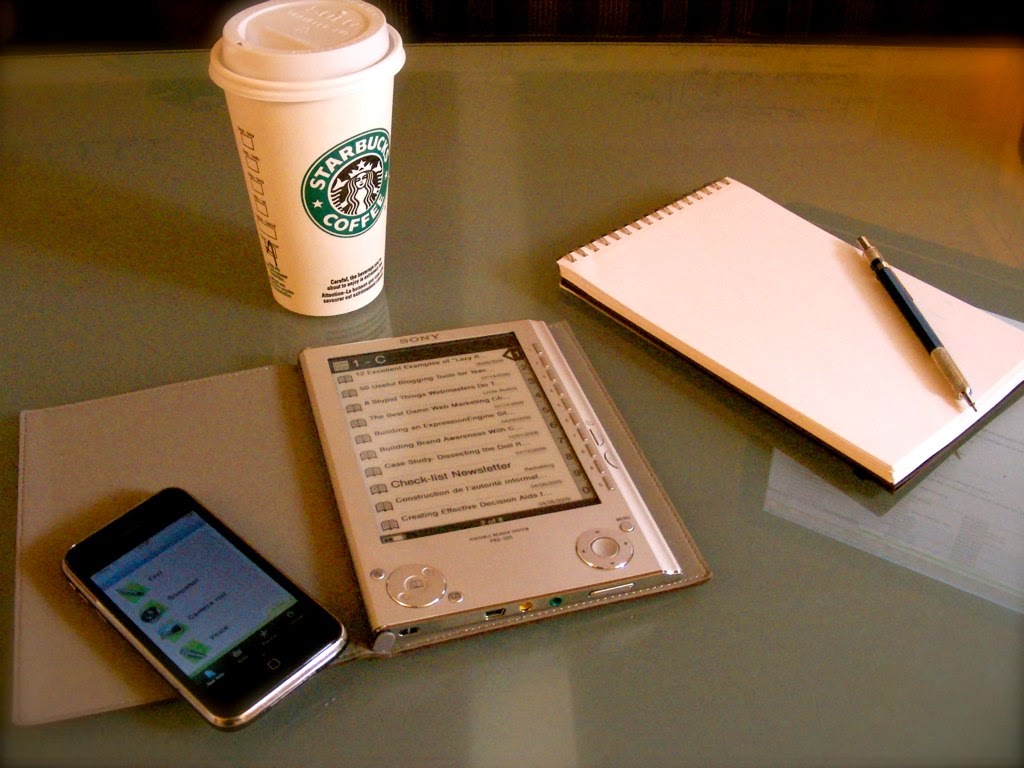Figure 1. Coffee while studying (4).
When you hear the word caffeine, what do you think of? Most people think of coffee, but caffeine can be found in everything from coffee to tea, to chocolate and pills, and even in leggings! The most common source of caffeine is from coffee beans, however it can also come from tea leaves, cocoa, or kola nuts (2). The main use of caffeine is to keep you awake from those long nights of studying (3). There are also many other uses for caffeine such as increasing alertness, helping babies that have trouble with breathing, or just as comfort food.
When you eat or drink something that contains caffeine, it gets absorbed by your body and carried to your brain by your blood (1). The caffeine will then bind to targets in your brain called "adenosine receptors" (1). These adenosine receptors normally stop the release chemicals to your body that will help with keeping your body alert and awake (1). When caffeine attaches to these receptors, it blocks their ability to stop these chemicals from being released which in turn allows more of these "energy" chemicals to be released (6). Warning! The more caffeine you drink/eat, the more will be required to get the same effect over time (3). This is because as more receptors are blocked, the body creates more receptors to try and compensate (6). Caffeine remains in the body of an adult for a couple hours (3-7 hours) followed by an energy crash (1).
In high enough amounts, caffeine can be lethal so over-consumption should be avoided (3). Caffeine is such a common substance that it is difficult finding alternatives. If an energy boost is needed, there are some other foods that you could try eating or drinking. For example fruits and fruit juices will give a temporary energy boost similar to caffeine (5). Decaf coffee is also useful in helping lowering caffeine consumption because of the lower caffeine amount in the coffee (5).
So although foods and drinks with caffeine can be delicious, it should be used in moderation. Try some of the healthier alternatives when possible.
References
(1) Caffeine. (2013). Drug Bank. Retrieved March 6, 2015, from http://www.drugbank.ca/drugs/DB00201
(2) Caffeine. (2015). Wikipedia. Retrieved March 6, 2015, from http://en.wikipedia.org/wiki/Caffeine
(3) Ford-Martin, P. (2013). Caffeine. The Gale Encyclopedia of Nursing and Allied Health (3rd ed., Vol. 2, pp. 591-593). Detroit, MI: Gale Group.
(4) Meunier, B. (Photograph). (2009, July 29). Common bien partir la journee![Online image]. Retrieved from https://www.flickr.com/photos/benoitmeunier/3769104218/
(5) Russell, B. G. (2013). Offering customers a caffeine alternative. Specialty Coffee Retailer, 20(7), 14-17.
(6) Schlager, E., Weisblatt, J., Newton, D. (2006). Caffeine. Chemical compounds (1st ed., Vol. 1, pp. 137-141). Detroit, UXL: Gale Group.

No comments:
Post a Comment